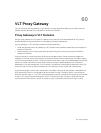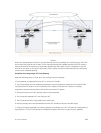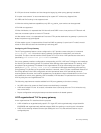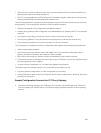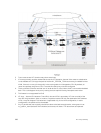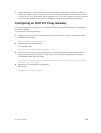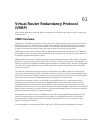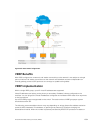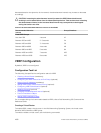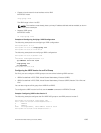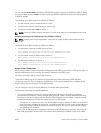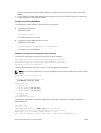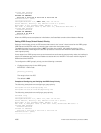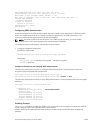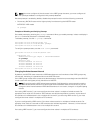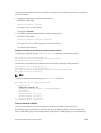
decreases based on the dynamics of the network, the advertisement intervals may increase or decrease
accordingly.
CAUTION: Increasing the advertisement interval increases the VRRP Master dead interval,
resulting in an increased failover time for Master/Backup election. Take caution when increasing
the advertisement interval, as the increased dead interval may cause packets to be dropped
during that switch-over time.
Table 72. Recommended VRRP Advertise Intervals on the Z9500
Recommended Advertise
Interval
Groups/Interface
Total VRRP Groups
Less than 250 1 second 12
Between 250 and 450 2–3 seconds 24
Between 450 and 600 3–4 seconds 36
Between 600 and 800 4 seconds 48
Between 800 and 1000 5 seconds 84
Between 1000 and 1200 7 seconds 100
Between 1200 and 1500 8 seconds 120
VRRP Configuration
By default, VRRP is not configured.
Configuration Task List
The following list specifies the configuration tasks for VRRP.
• Creating a Virtual Router (mandatory)
• Configuring the VRRP Version for an IPv4 Group (optional)
• Assign Virtual IP Addresses mandatory)
• Setting VRRP Group (Virtual Router) Priority (optional)
• Configuring VRRP Authentication (optional)
• Disabling Preempt (optional)
• Changing the Advertisement Interval (optional)
• Track an Interface or Object
• Setting VRRP Initialization Delay
For a complete listing of all commands related to VRRP, refer to Dell Networking OS Command Line
Reference Guide.
Creating a Virtual Router
To enable VRRP, create a virtual router. In the Dell Networking Operating System, the virtual router
identifier (VRID) identifies a VRRP group.
To enable or delete a virtual router, use the following commands.
1002
Virtual Router Redundancy Protocol (VRRP)



